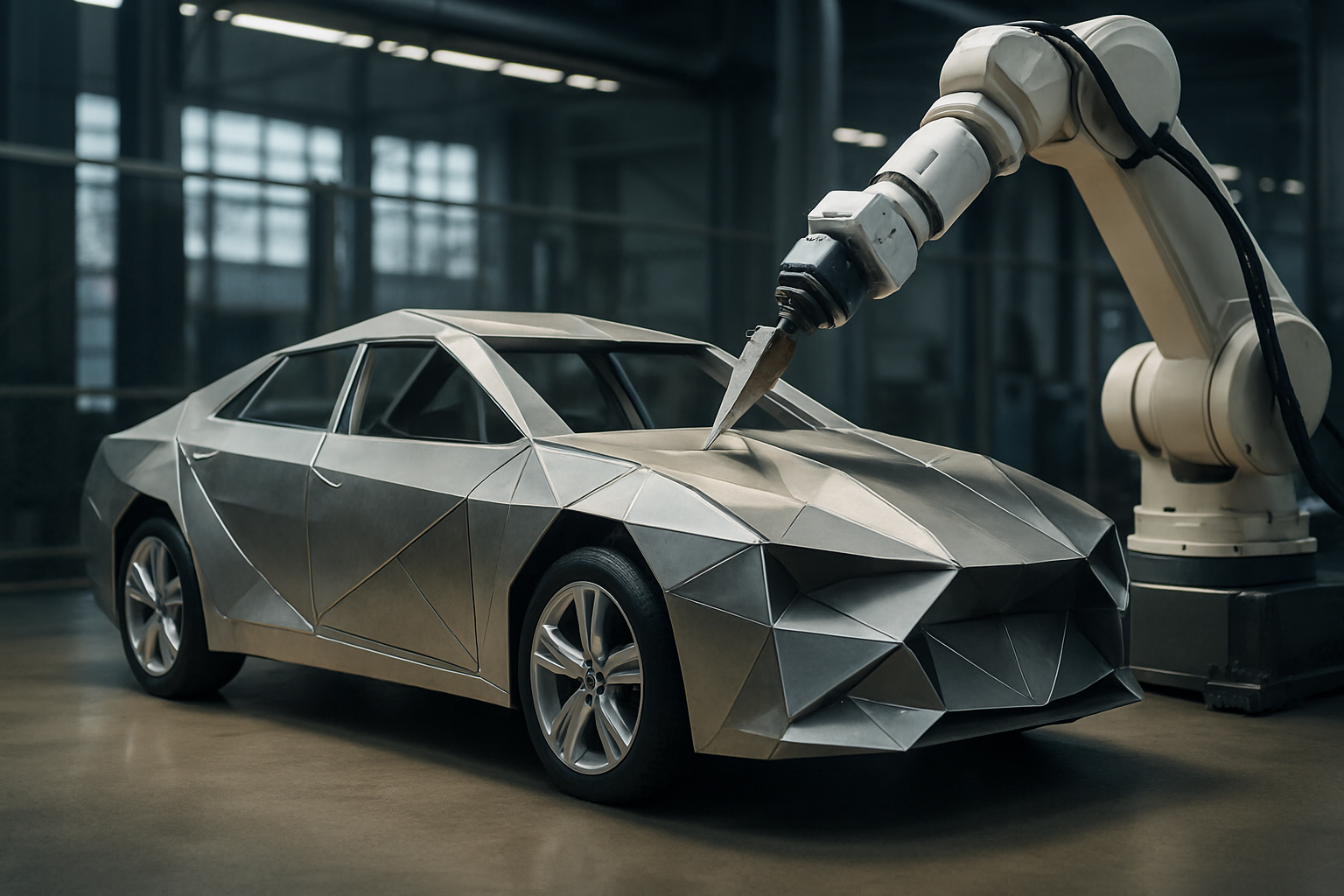Augmented Reality in Car Manufacturing: Revolutionizing Automotive Production
The convergence of digital technology and automotive manufacturing is ushering in a new era of efficiency, precision, and innovation. At the forefront of this revolution is augmented reality (AR), a cutting-edge tool that's reshaping how cars are designed, built, and quality-checked. Imagine assembly line workers guided by holographic instructions, engineers collaborating on virtual prototypes, and technicians diagnosing issues through AR-enhanced vision. This isn't science fiction—it's the present and future of car manufacturing.

As computing power increased and AR hardware became more sophisticated, automakers recognized the potential for transformative applications on the factory floor. The ability to overlay digital information onto the physical world opened up new possibilities for streamlining workflows, reducing errors, and enhancing worker capabilities.
Enhancing Assembly Line Efficiency
One of the most impactful applications of AR in car manufacturing is on the assembly line. Workers equipped with AR glasses or tablets can see step-by-step instructions projected directly onto the components they’re working with. This real-time guidance reduces the cognitive load on workers, allowing them to focus on the task at hand without constantly referring to manuals or computer screens.
For example, when installing a complex wiring harness, an AR system can highlight the exact routing path and connection points, ensuring accuracy and reducing the likelihood of errors. This not only speeds up the assembly process but also improves quality control by minimizing human error.
Virtual Prototyping and Design Collaboration
AR is revolutionizing the way automotive designers and engineers collaborate on new vehicle designs. Traditional clay models and 2D drawings are being supplemented—and in some cases replaced—by virtual 3D models that can be manipulated and viewed from any angle using AR headsets.
This technology allows design teams spread across different locations to work together in a shared virtual space, examining and modifying vehicle designs in real-time. Engineers can assess aerodynamics, ergonomics, and aesthetics without the need for physical prototypes, significantly reducing development time and costs.
Training and Skill Development
The automotive industry has long faced challenges in training new workers and upskilling existing ones to keep pace with rapidly evolving technologies. AR is proving to be a game-changer in this arena, offering immersive, interactive training experiences that accelerate learning and improve retention.
Trainees can practice complex assembly procedures or maintenance tasks on virtual car components, receiving instant feedback and guidance. This hands-on approach not only enhances learning outcomes but also reduces the risk of costly mistakes on actual vehicles during the training process.
Quality Control and Inspection
Ensuring consistent quality across thousands of vehicles rolling off the assembly line is a monumental task. AR is making this process more efficient and accurate by equipping quality control inspectors with tools to quickly identify and document issues.
Using AR-enabled devices, inspectors can overlay digital schematics onto physical vehicles, instantly highlighting any deviations from specifications. This technology can also assist in non-destructive testing, allowing inspectors to see beneath surfaces or visualize stress points that would be invisible to the naked eye.
Maintenance and Repair Assistance
Beyond the manufacturing process, AR is also transforming how vehicles are maintained and repaired. Technicians equipped with AR glasses can access real-time diagnostic information, repair manuals, and expert assistance without taking their hands off the vehicle.
This application of AR not only speeds up repair times but also improves accuracy, especially when dealing with increasingly complex vehicle systems. It’s particularly valuable for dealership technicians who need to stay up-to-date with a wide range of vehicle models and technologies.
Challenges and Future Outlook
While the benefits of AR in car manufacturing are clear, the technology still faces several challenges. Hardware limitations, such as the bulk and battery life of AR devices, can make long-term use on the factory floor uncomfortable. There’s also the need for robust software systems that can seamlessly integrate with existing manufacturing processes and databases.
Data security and privacy concerns present another hurdle, as AR systems often require access to sensitive design and production information. Ensuring the integrity and confidentiality of this data is paramount as AR becomes more deeply integrated into automotive manufacturing.
Looking ahead, the future of AR in car manufacturing appears bright. As the technology continues to evolve, we can expect to see even more innovative applications. From AI-powered AR assistants that can predict and prevent production issues to advanced visualization tools that allow customers to customize their vehicles in unprecedented detail, the possibilities are vast.
The integration of AR into car manufacturing represents a significant leap forward in the industry’s ongoing digital transformation. As automakers strive to meet the demands of an increasingly tech-savvy market while navigating complex economic and environmental challenges, AR stands out as a powerful tool for driving innovation, efficiency, and quality in the vehicles of tomorrow.





